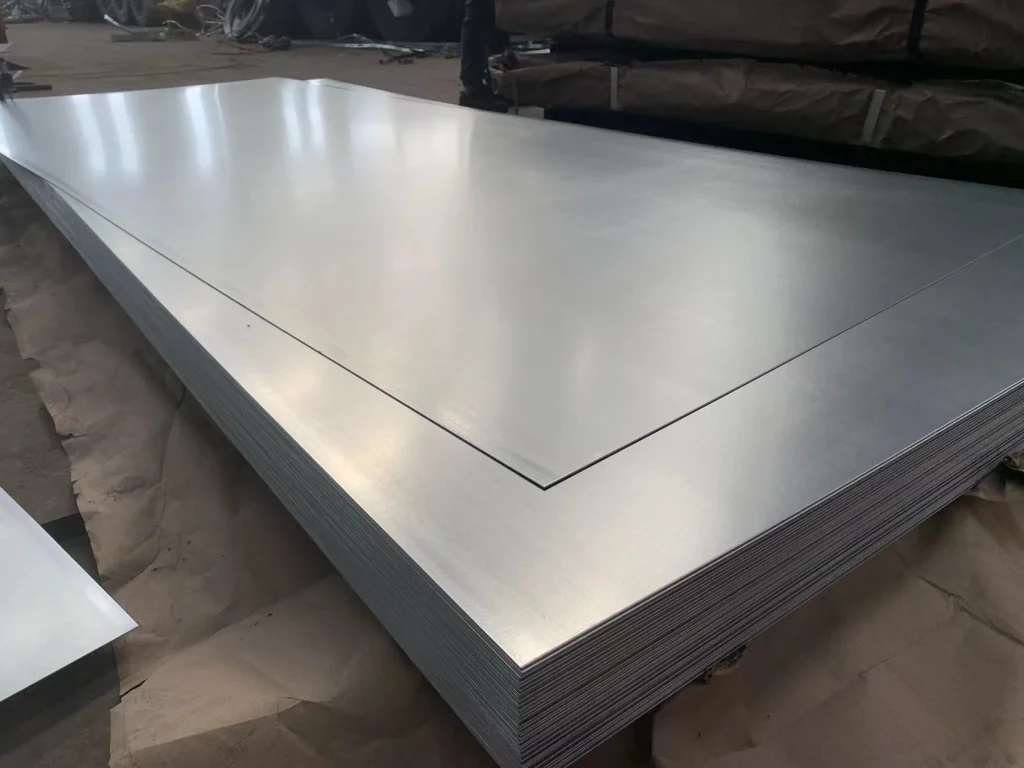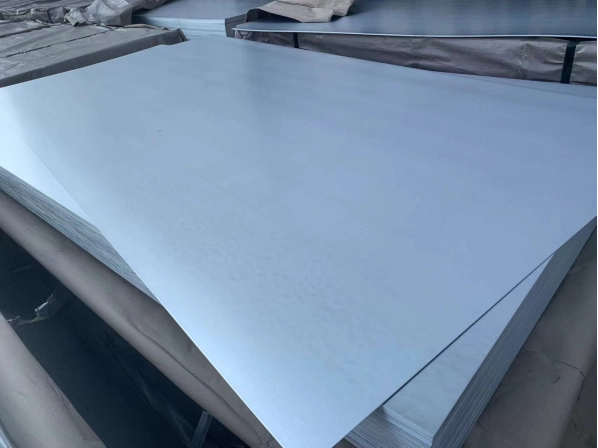Wrapping Your Head Around Galvanized Steel
What’s the Deal with Galvanized Steel?
Galvanized steel’s like regular steel with a dope zinc jacket to keep rust and corrosion at bay. They slap on that zinc by dunking the steel in a hot zinc bath or zapping it with some electric magic. The result? A tough-as-nails material that laughs off harsh weather, making it a go-to for construction, car parts, and all sorts of industrial gigs.
What’s Cool About That Zinc Coating?
The zinc layer’s like a superhero shield against water and air, the main culprits behind rust. It doesn’t just sit there looking pretty—it takes one for the team. If you nick or scratch it, the zinc steps up and corrodes instead of the steel underneath. That’s some next-level protection! Plus, it sticks to the steel like glue, so no peeling or flaking, even when things get rough.
Why Galvanized Sheets Are a Big Win
Perks That Make ‘Em Shine
Galvanized sheets are straight-up champs for a ton of reasons. They’re cheap to maintain and last forever compared to plain steel, so your wallet’s happy. These bad boys can handle outdoor chaos without falling apart. You can bend ‘em, cut ‘em, or shape ‘em into whatever you need. And they look slick enough for stuff like roofs or fences where folks will actually see ‘em.
How Galvanized Steel Holds Up Underground
Dealing with Dirt and Soil Vibes
When you bury galvanized steel, it’s gotta play nice with the soil, and that can get tricky. Stuff like soil pH, how wet it is, or if it’s loaded with chlorides messes with how long the zinc coating lasts. Neutral or kinda alkaline dirt’s chill for galvanized steel—less rust action. But acidic soils? They’re like kryptonite, chewing through the zinc faster. Wet spots with salty chlorides crank up the corrosion too.
What Affects Buried Steel’s Lifespan?
A bunch of things decide how long your buried galvanized sheet stays solid:
Soil Type: Dirt packed with sulfates or chlorides is bad news, speeding up rust.
Water Levels: Soggy soil sparks galvanic reactions that eat at the zinc.
Coating Thickness: Beefier zinc layers fend off corrosion longer.
Temp Swings: Crazy hot or cold can mess with the coating and steel.
Organic Junk: Rotting leaves or stuff in the soil spit out acids that nibble at metal.
Checking these out before you bury your steel saves you headaches down the line.
Fighting Rust in Wet Spots
Galvanized steel’s a beast against rust in damp places, thanks to that zinc armor. But if it’s soaking in high humidity or wet dirt forever, the zinc can start to wear thin if you don’t keep an eye on it. Wanna make it last underground? Slap on extra protective wraps or coatings to keep it locked down.
Qingdao Sunrise New Material Co., Ltd.’s custom fixes got you covered for whatever nasty conditions your galvanized gear’s facing.
Where Galvanized Steel Gets Buried
What’s It Doing Underground?
Galvanized sheets are all-stars in underground jobs ‘cause they don’t rust easy. You’ll spot ‘em in pipelines, culverts, and drainage setups. They hold strong against wet, wonky soil pH, and other underground nonsense. They’re also big in storage tanks and supports for stuff built below ground. Their rust-proof vibes make ‘em perfect for projects you wanna last ages.
In farms, they’re shielding irrigation pipes or water tanks buried in the dirt. In cities, they’re guarding electrical wires or telecom cables under the streets. It’s like galvanized steel’s the unsung hero of keeping things running smooth below the surface.
How It Stacks Up Against Other Stuff
Picking the right material for underground jobs means weighing the pros and cons. Galvanized steel’s got a sweet spot compared to other options like stainless steel or PVC.
Stainless steel’s a rust-fighting beast but costs an arm and a leg, so it’s not always practical for big projects. PVC’s light and cheap but wimpy when you need serious strength. Galvanized steel’s the Goldilocks choice—affordable but tough. Unlike plain steel that rusts like crazy in wet dirt, the zinc coating keeps galvanized sheets kicking for way longer.
How to Bury Galvanized Steel Right
Getting the Dirt Ready
You gotta prep the soil like a pro to make sure your galvanized sheets last. First up, check the soil’s pH and what’s in it. Neutral or slightly alkaline dirt’s your friend—less rust drama. Acidic soil’s a jerk, so toss in some lime to chill it out if you gotta.
Watch out for chlorides or sulfates in the dirt too. Those crank up corrosion like nobody’s business. A solid soil test spots trouble early so you can dodge it. Also, keep water from pooling around your steel. Throw in some gravel or drainage pipes to shunt water away, cutting down on galvanic reactions that mess with your gear.
Extra Armor for Underground Life
Galvanized steel’s already tough, but you can make it even gnarlier underground. Slap on an extra coating over the zinc for a double shield against water and nasties in the soil. Wrapping the sheets in waterproof membranes or geotextiles is another slick move—it’s like bubble wrap for your steel, keeping dirt junk at bay.
In spots with tons of chlorides or wild temp swings, hook up a cathodic protection system. That’s where you use chunkier metals like magnesium or aluminum as sacrificial anodes to take the corrosion hit instead of your steel. Also, keep an eye on your buried gear. Regular check-ups catch wear or dings early, so you can patch things up before they go south.
Frequently Asked Questions
- Can you just bury galvanized steel in dirt?
Yup, but how long it lasts depends on stuff like soil pH, wetness, and chlorides. - How’s galvanization keeping steel safe underground?
The zinc’s like a bodyguard, blocking rust and taking the fall if it gets scratched. - What’s the deal with burying galvanized sheets?
Fix acidic soil, keep water drained, and maybe add wraps or coatings for extra juice. - What else can you use underground?
Stainless steel’s rust-proof but pricey; PVC’s cheap but too weak for heavy jobs.
Wanna dig into tough solutions for tricky spots? Check out Qingdao Sunrise New Material Co., Ltd., a global supplier rocking ISO9001:2015 quality vibes.








